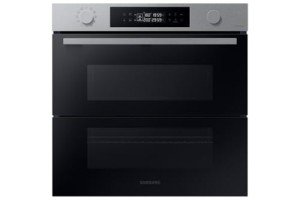Integrating Cooking: A Comprehensive Guide to Integrated Hobs and Ovens
In the modern kitchen, performance integrates seamlessly with design. An integrated hob and oven system exemplifies this blend, providing both functionality and aesthetic appeal. As home cooks seek ways to improve their culinary spaces, understanding the advantages and functions of integrated hobs and ovens ends up being vital. This post delves into the numerous aspects of integrated cooking appliances, providing insights into their benefits, installation factors to consider, and upkeep suggestions.
What is an Integrated Hob and Oven?
An integrated hob and oven setup refers to the design where the cooking hob (the surface area on which pots and pans are positioned to prepare food) and the oven (the appliance utilized to bake, roast, and broil) are designed to fit seamlessly into kitchen cabinet systems. This cohesive design not only conserves area but likewise enhances the visual harmony of the kitchen.
Secret Features of Integrated Hobs and Ovens
- Area Efficiency: These appliances are created to fit within basic kitchen cabinetry, enhancing kitchen space while permitting more storage choices.
- Elegant Appearance: Integrated models offer a smooth, contemporary look that can elevate any kitchen's visual.
- Boosted Functionality: Many integrated systems come with sophisticated features such as induction cooking, self-cleaning ovens, and smart innovation compatibility.
- Better Usability: Placing the hob at a suitable height and having the oven conveniently situated listed below can improve cooking ergonomics.
Benefits of Integrated Hobs and Ovens
The growing choice for integrated hobs and ovens develops from numerous associated advantages:
1. Space-Saving Design
- Integrated appliances remove the requirement for large standalone units.
- They enable more counter area, creating a functional work area for cooking.
2. Visual Cohesion
- Integrated systems can be completed to match kitchen cabinetry, offering a streamlined and unified look.
- The kitchen can preserve a minimalist style, devoid of visual clutter.
3. Superior Functionality
- Functions like touch controls, timers, and automated cooking programs can improve the cooking experience.
- Induction hobs can supply faster cooking times and more exact temperature level control compared to standard gas or electric hobs.
4. Energy Efficiency
- Numerous modern integrated ovens include enhanced insulation and energy-efficient features, minimizing energy consumption.
- Induction hobs use energy straight in the cookware, causing less heat loss and faster cooking.
Installation Considerations
When thinking about an integrated hob and oven, a number of aspects need to be examined during installation.
1. Space Measurements
- Kitchens Layout: Ensure the dimensions of the readily available space accommodate both the hob and oven.
- Ventilation: Adequate ventilation is important to avoid overheating and ensure effective operation, particularly with gas designs.
2. Electrical and Gas Connections
- Power Supply: Verify that the kitchen's power supply meets the home appliance requirements (voltage, amperage).
- Gas Lines: For gas hobs, professional installation might be required to ensure safety.
3. Customization and Finishes
- Pick surfaces that match kitchen interiors, such as stainless-steel, glass, or perhaps custom cabinetry to hide the appliances.
4. Accessibility
- Make sure that both the hob and oven are easily obtainable. An ergonomic setup will enhance the cooking experience and make it safer.
Integrated Hob and Oven Models
| Design | Type | Key Features | Cost Range |
|---|---|---|---|
| Bosch Series 4 HBG634BBR | Built-In | Wi-Fi connection, multiple cooking modes | ₤ 1,200 - ₤ 1,500 |
| Samsung NZ48K7570UG | Induction | Flex zone, wise technology, touch controls | ₤ 1,500 - ₤ 2,000 |
| Miele H 6260 BP | Built-In | Self-cleaning, automated programs, streamlined design | ₤ 2,500 - ₤ 3,500 |
| NEFF B57VR22N0 | Multifunction | Slide&& Hide door, advanced heat distribution | ₤ 2,000 - ₤ 2,500 |
Upkeep Tips
To maximize the life and performance of integrated hobs and ovens, correct upkeep is crucial:
- Regular Cleaning: Clean the hob and oven routinely to avoid buildup from spills and food residues. Use non-abrasive cleaners to protect surface areas.
- Examine Seals and Gaskets: Check oven door seals to guarantee effective heating and avoid energy loss.
- Look for Damage: Regularly check gas pipes, electrical cable televisions, and connections for wear or damage. Immediate repair or replacement is crucial for safety.
- Follow Manufacturer's Guidelines: Adhere to the specific maintenance guidelines offered by the maker for ideal efficiency.
FAQs
1. Can I set up an integrated hob and oven myself?
- While some homeowners opt for DIY setup, it is a good idea to hire a professional, specifically when gas connections or electrical circuitry are included.
2. Are integrated hobs and ovens energy-efficient?
- Lots of modern integrated systems are developed with energy effectiveness in mind, featuring thermal insulation and energy-saving modes.
3. What is the best product for an integrated hob and oven?
- Stainless steel is popular due to its durability, ease of cleansing, and resistance to corrosion. However, glass ceramic and enamel-coated choices likewise provide aesthetic appeal.
4. How do built in double oven and hob fix common issues with integrated hobs and ovens?
- Describe the user handbook for repairing standards. Basic problems like power failures or unequal cooking may often be solved through easy changes or resets.
An integrated hob and oven system uses a mix of functionality and style that aligns with modern kitchen designs. By understanding the advantages, installation requirements, and upkeep suggestions associated with these appliances, homeowners can make informed choices that enhance their cooking experiences. As kitchens progress into multifunctional areas, integrated cooking options will continue to acquire appeal, shaping the future of culinary areas.

